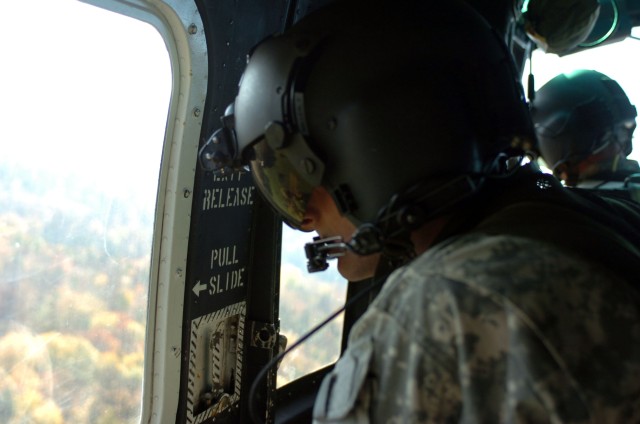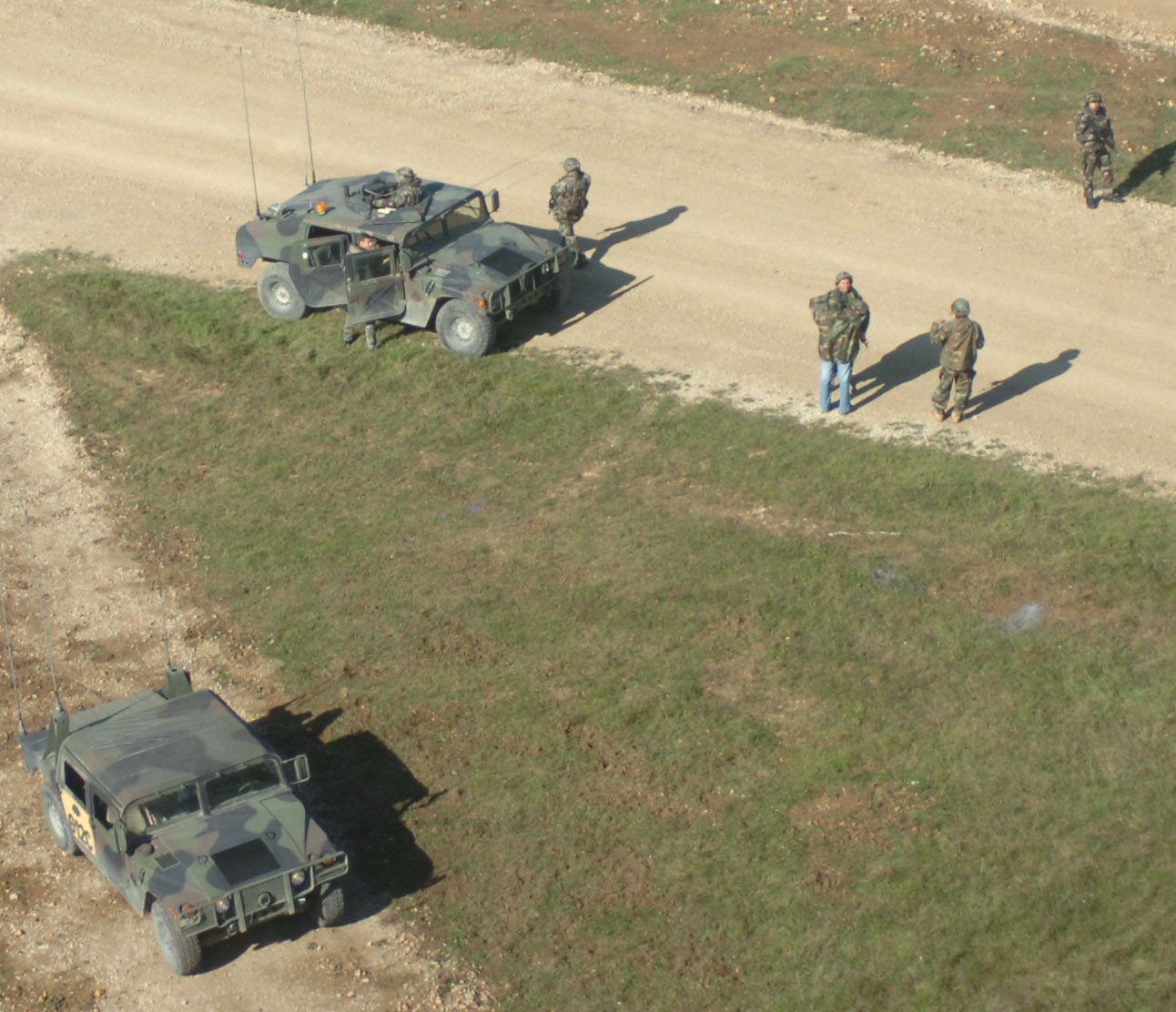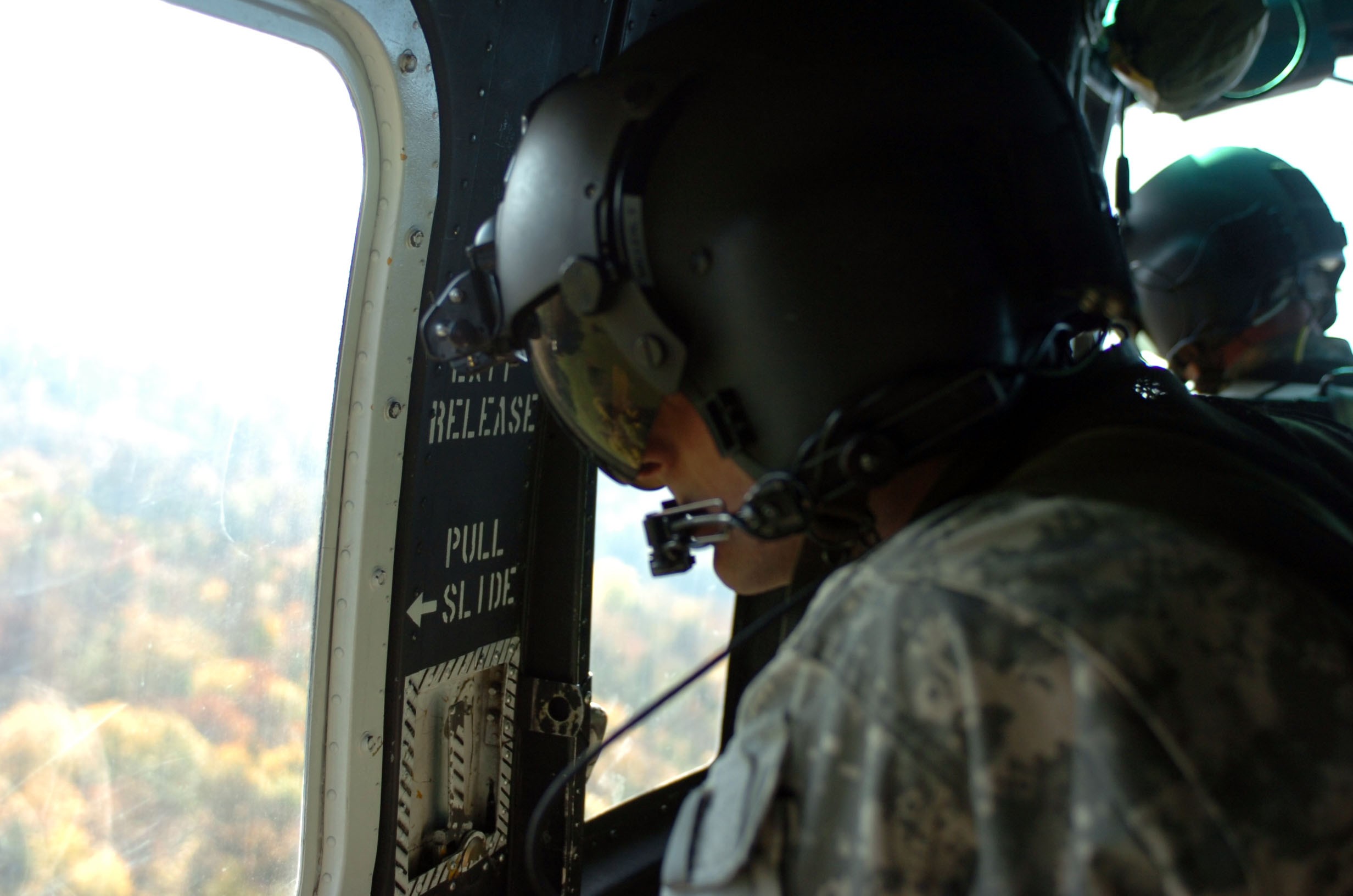HOHENFELS, Germany - High above the Joint Multinational Readiness Center aviators play a vital role in training U.S. and NATO allies by giving them a glimpse of the air power capabilities that are only a call away.
As soldiers go through their lanes training along the training areas here, they are joined by members of the JMRC Operations Group, Aviation Detachment, also known as "the Falcons." They interact with the soldiers below giving them spot reports, doing aerial reconnaissance and finally assisting them with casualty evacuations.
"It's good for them to know that at any level they can call on U.S. aircraft for assistance," said Chief Warrant Officer 4 Jay Hogg, pilot in command on this mission.
Flying Huey helicopters, the Falcons hover just above the action. Hogg and his fellow pilot, Chief Warrant Officer 2 Josh White, pay close attention to the eight-vehicle convoy that moves on the lanes below them.
Puffs of white smoke rise off the ground. The convoy is under fire. Hogg and White talk to the French soldiers on the ground and try to guide them.
Hogg, a New England native who has served two combat tours in Afghanistan, said the scenarios soldiers encounter below are similar to those they will see on their deployment. For those who have never been there, JMRC is for many soldiers their first opportunity to have air assets readily at their disposal.
"This is good training for them," White said. "Many of them have never had a chance to work with air cover before."
"A private on the ground might have no idea that they can call on American aircraft if they need help," Hogg added. "They need to know that we are available to assist them if they need us."
It's also good training for the pilots. Army aviators play a vital role in protecting U.S. and allied convoys from attack.
"This is about what we do in Afghanistan," Hogg said. "Except there we fly for seven, eight or 10 hours doing escort missions."
For his part, White said he enjoys the mission. It's a new challenge every day for the Abilene, Texas-born aviator who graduated in 1996 from Cooper High School.
"I enjoy the mission here," White said. "It's pretty good because you get to interact with people from other countries."
Sometimes, that interaction isn't easy. The language barrier can slow things down sometimes.
That can become evident when it comes time to evacuate casualties. While none of those who are designated as "wounded" in the role playing training are actually put onboard the aircraft, medical personnel on the ground are required to call in a nine-line medical evacuation report and update the crew chief on the patient's condition when the aircraft lands.
"Most every NATO country coming through has somebody who is an English speaker," said Sgt. Trent Miller, who hails from Las Animas, Colo., and serves as the aircraft's crew chief. "Sometimes, they speak pretty broken English."
Miller helps the soldiers carry their casualty to the aircraft while ensuring they stay clear of the helicopter's blades. The exercise ends when they give him the patient's condition and vital signs.
"Not only do we have a language barrier," Hogg said. "It can be a challenge working with foreign soldiers who use different techniques, but we always make it work."




Social Sharing